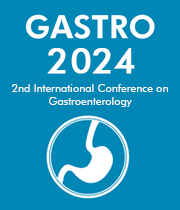Title : Use of indocyanine green fluorescence imaging in the extrahepatic biliary tract surgery
Abstract:
Cholelithiasis presents in approximately 20% of the total population, ranging between 10% and 30%. It presents one of the most common causes for non malignant surgical treatment. The cornerstone therapy is laparoscopic cholecystectomy, urgent of elective. Laparoscopic cholecystectomy is nowadays the gold standard surgical treatment method, however bile duct injury occurred to as high as 0.4-3% of all laparoscopic cholecystectomies. The percentage has decreased significantly to 0.26-0.7% because of increased surgical experience and advances in laparoscopic imaging the past decade which have brought to light new achievements and new methods for better intraoperative visualization such as HD and 3D imaging system. However, bile duct injury remains a significant issue and indocyanine green fluorescence imaging, mainly cholangiography but also angiography, can further enhance the safety of laparoscopic cholecystectomy as it allows the earlier recognition of the cystic and common bile duct, even in several times before dissecting the Callot triangle. Fluorescence cholangiography could be an ideal method in order to improve bile tree anatomy identification and enhance prevention of iatrogenic injuries during laparoscopic cholecystectomies and also it could be helpful in young surgeons training because it provides enhanced intraoperative safety, but however this method does not replace CVS. Finally, our ongoing current study results comparing intravenous to direct administration of ICG in the gallbladder will be presented.
Audience Take Away:
-
ICG fluorescence cholangiography can enhance the safety of laparoscopic cholecystectomy as it allows the earlier recognition of the cystic and common bile duct, even in several times before dissecting the Callot triangle
-
The best timing and dosage of ICG administration in order to perform ICG cholangiography and angiography
-
ICG fluoresce imaging doesn’t replace the critical view of safety



